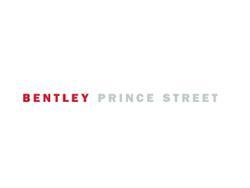Bentley Prince Street Carpets Shanghai Airport
Los Angeles, CA, April 1, 2008 – Visitors to China’s Shanghai Pudong International Airport will soon be walking on carpet by California-based manufacturer Bentley Prince Street.
The company recently installed nearly 100,000 square yards of its broadloom carpet in the airport’s new Terminal 2, opening this month.
Bentley Prince Street was awarded the contract by the Chinese Ministry of Aviation after a bidding process that involved an in-depth review of the company and its design capabilities, carpet ingredients and environmental sustainability progress.
The company was represented in the deal by Project Development International Corporation (PDIC), its exclusive distributor in Asia and the Pacific Rim. The collaborative partnership created a unique, sophisticated and durable carpet in custom-designed colors for the new terminal’s walkways, gate areas and VIP lounge.
“Our carpet designs, creative capabilities, premium 6,6 nylon ingredients and sustainability focus were all differentiators for us," said Bentley Prince Street President Anthony Minite.
"This was the first airport in China to use broadloom carpet in a major public space, so it was critical for us to deliver a first-class product that worked for the airport on every level. Overseas markets hold tremendous potential for our carpet products, and the Asia Pacific region in particular is experiencing amazing growth.”
An important element was Bentley Prince Street’s commitment to support PDIC with its installation and maintenance of the carpet. Working with PDIC, Bentley Prince Street sent a team to China to educate the airport team about daily maintenance techniques. The company also trained a contingent of Chinese airport representative on installation and maintenance procedures at its Los Angeles mill.
Bentley Prince Street and PDIC also used simulation technology throughout the entire design process. This 3D visualization tool uses technology to provide life-size computer recreations of custom color carpet to help in the design and specification process. This technology eliminates the need for actual carpet samples, preserving non-renewable resources and reducing landfill waste
